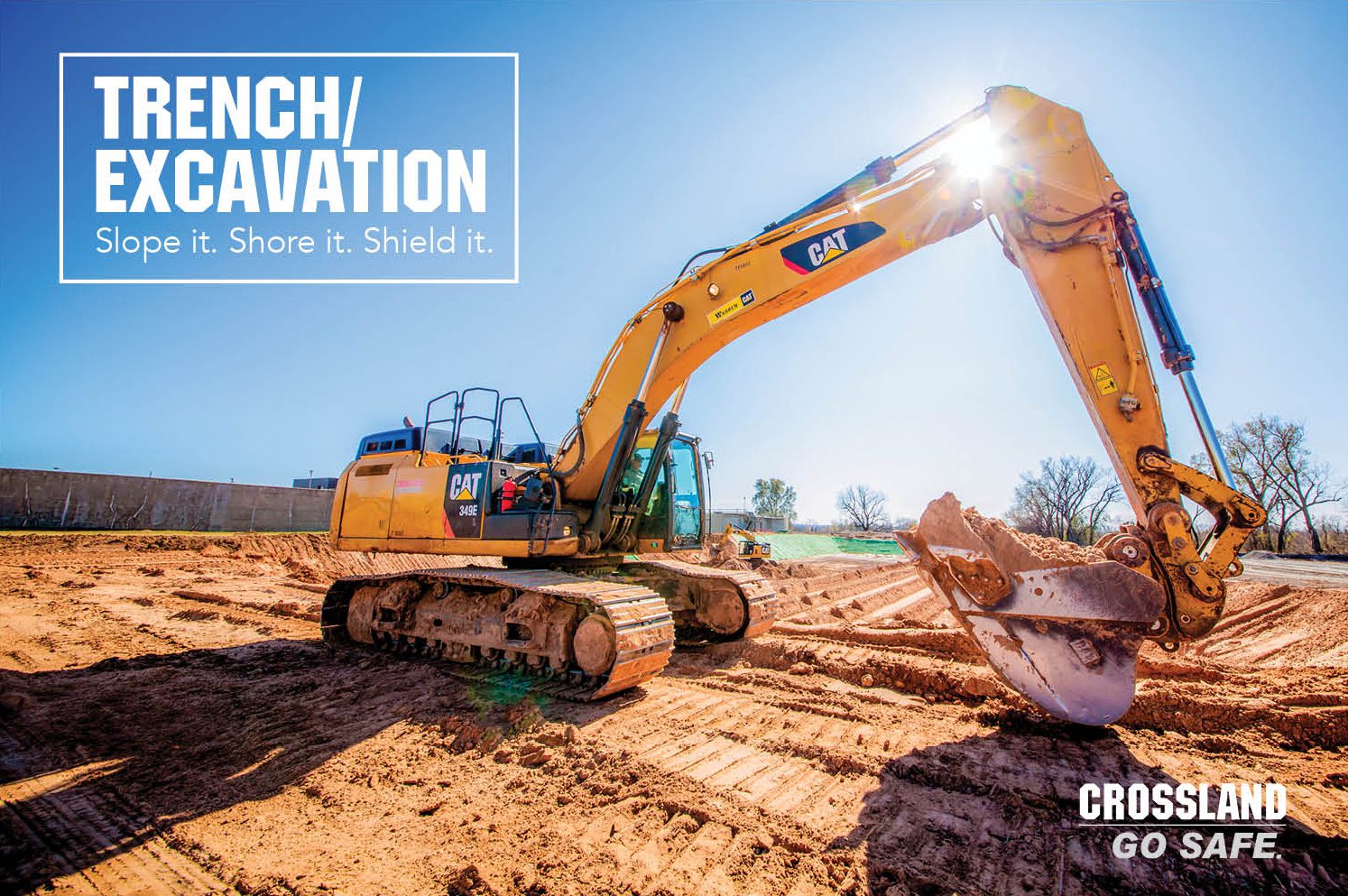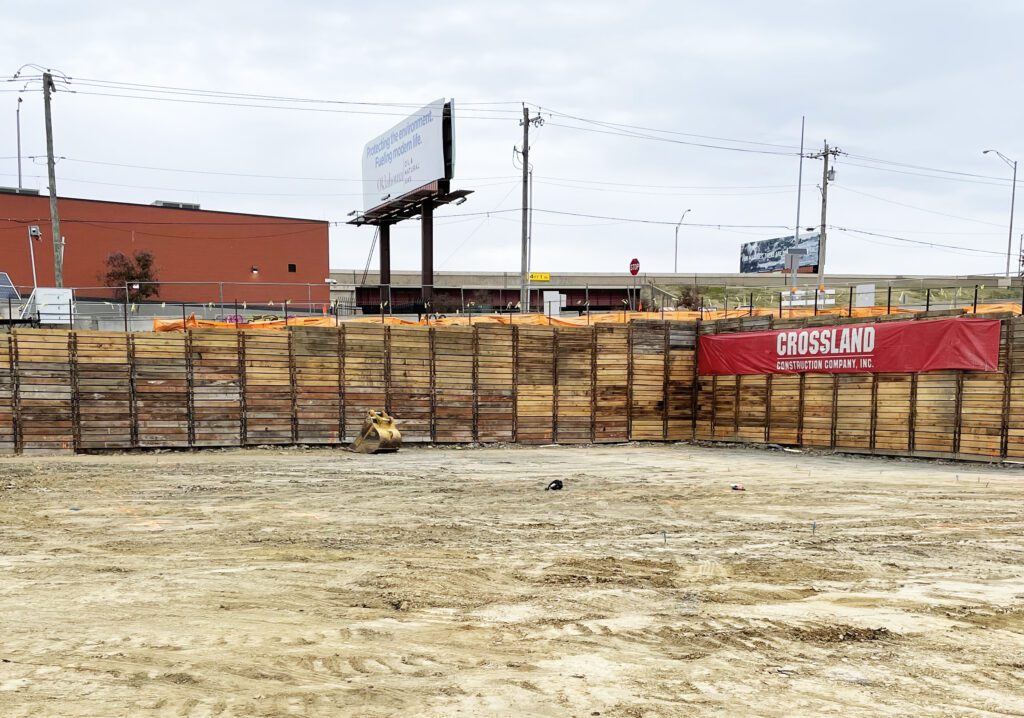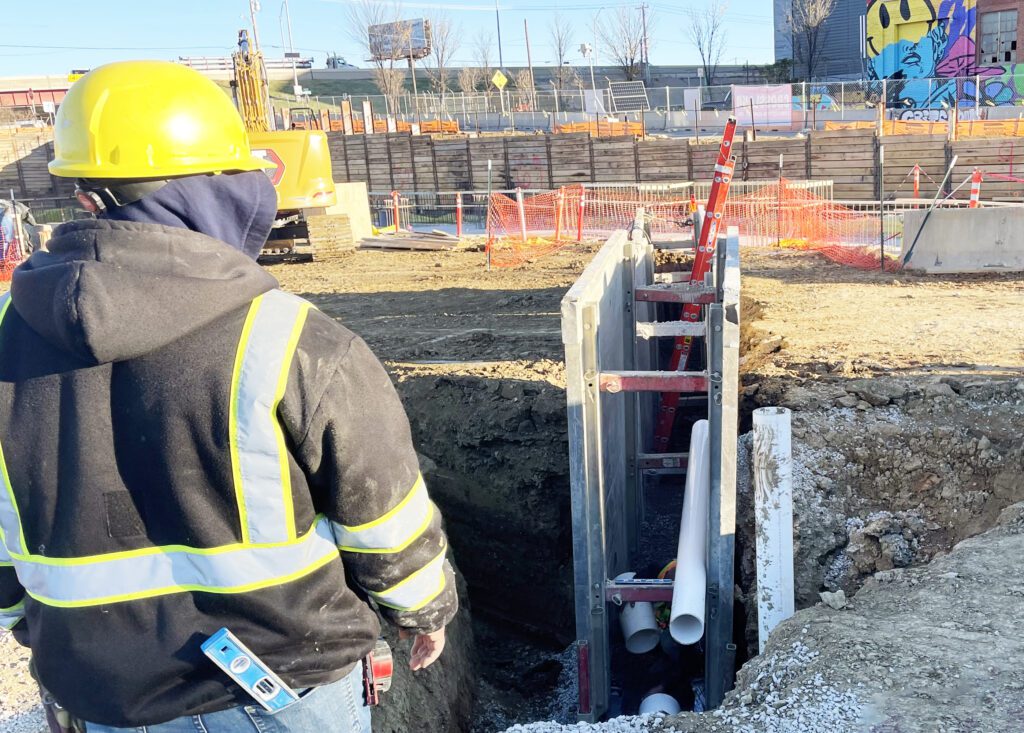News / Crossland Heavy / Projects
Digging Deep Into Excavation Safety: Slope, Shore, or Shield
| 2 minute read

As Safety Week begins, it’s a good time to refresh on some key practices that keep our workers and crews safe and sound. With a significant amount of our work happening underground, it’s crucial for our crews to handle areas like excavation with strict care and stick to safety protocols.
When digging trenches or excavations 4 feet or deeper, we must consider three methods: Slope, Shore, or Shield.
Let’s Dig In
1. Slope It:
When it comes to excavation safety, sloping is a primary method for preventing trench wall collapses. Cut back the trench walls at an angle inclined away from the excavation area, kind of like building a little ramp away from the excavation area. This slope is our best buddy for preventing collapses and keeping the soil stable. Remember, the angle of the slope depends on the type of soil we’re getting ourselves into.
2. Shore It:
Occasionally, sloping proves inadequate or impractical. In these situations, shoring may be a better method. For this method, you install supports such as soil nails or sheet piles, aluminum hydraulic shores, or timber shoring systems along the trench walls. These supports effectively shore up the soil, providing stability and protection to workers within the excavation. Be diligent and install these systems per the tabulated data sheet supplied by the manufacturer.

3. Shield It:
Lastly, there’s shielding. For excavations where sloping or shoring isn’t feasible or adequate, shielding offers a reliable solution. Shielding involves the use of trench boxes or trench shields, which are sturdy structures designed to surround and protect workers inside the trench. It is essential to ensure that trench boxes are correctly installed and used according to manufacturer guidelines to maximize their effectiveness.

As we observe Safety Week, let’s not just talk about excavation safety but reaffirm our commitment to it. It’s non-negotiable when it comes to protecting workers’ lives and preventing accidents on the job site. Whether you’re sloping trench walls, shoring them with supports, or shielding them with trench boxes, remember, prioritizing safety is paramount. This will help ensure that every worker returns home safely at the end of the day.
Latest News
Looking for More?
Crossland Construction Expands in Texas with New San Marcos Office
MOmentum Bike Park Opens in Joplin: New 95-Acre Destination Built by Crossland Civil Division
Honoring Our Veterans: Army Veteran Zachary Smith Reflects on Service and Life at Crossland

